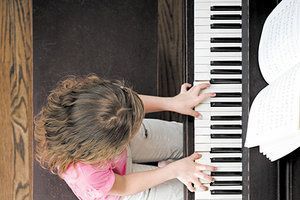You became a chiropractor to serve people, not an insurance company. You deserve to run a business that aligns with your values, supports your family and lights you up. Cash-based care isn’t just a pricing model – it’s a philosophy rooted in freedom, trust and respect for your patients and for yourself. Here's why - and how - to do it.
Don't Forget About the Performers
Donald Petersen Jr.'s recent article, "Your Chance to Go Back to High School" [May 1, 2014 DC], focused on the injuries incurred by high-school athletes and the subsequent opportunities for the chiropractic profession. I agree wholeheartedly. There are ample opportunities for chiropractors working with young athletes, particularly in the less-than "American" sports like soccer.
My son played for his high-school soccer team. He was also the place kicker on the football team. During his tenure, my daughter was a choreographer with the marching band. While everyone wants to be the "team doctor" for the high-school football team, I'd personally rather be the "team doctor" for the marching band. There are more students in the marching band than on any athletic team. The football team usually has around 40-50 players, while the marching band has twice as many; sometimes as many as 200. I like those odds! What's more, the injuries are pretty similar. With that in mind, the practicing chiropractor would be well-served to attend to such students.
Similar Risks: Overuse & Other Musculoskeletal Injuries
Like the student athlete, the student performer has been practicing their task for many years, often since 4-5 years old (if not younger). That means by the time they get to high school, they have been practicing their craft for 10 or more years.

Like student athletes, many of the injuries performing artists suffer affect the musculoskeletal system. They include such things as sprains and strains, overuse injuries and tendinitis. Many relate to extensive periods of practice with little rest, and many have poor ergonomics as a contributing factor.
In one study of 66 young pianists, 28 presented with overuse syndromes of the elbow, wrist and hand.1 Another study looked at 195 piano students; 75 (38.4 percent) had some form of musculoskeletal disorder.2 You get the idea: Like young athletes, young performing artists also suffer from injuries that affect their ability to perform.
After all, have you seen the typical piano keyboard? It's not exactly ergonomically designed. And the chairs musicians sit on aren't examples of good ergonomics, either. Additionally, if you've ever seen a young person lifting a tuba on and off the band bus (or carrying it a few miles in a parade), you immediately realize some basic education in proper lifting techniques would go a long way. Such a procedure would be considered a heavy lifting task in most industries.
According to one website, the hourly rate of repetition for sixteenth notes at a metronome setting of 120 is 28,800 (In case you're wondering, I have no idea what "sixteenth notes at a metronome setting of 120" means).* However, I do know 28,800 repetitions is highly problematic for most industries and sets the stage for a repetitive stress injury (RSI).
Like the student athlete who has just made the first team, the student performer who has just made "first chair" in the symphony orchestra is not inclined to rest an injury. After all, if they rest, someone else will get the job. The motivation to recover is quite different from that of a line worker in a warehouse, particularly when the worker doesn't like their job in the first place. And the student performer, like the student athlete, doesn't get worker's compensation benefits.
Thoughts on Accessing This Patient Population
I've been interested in performing artists for years. While my son was a soccer player, my daughter was a dancer. She's performed since she was very young (5 years of age). She suffered a work-related injury while choreographing dances for a cruise line. And a friend of mine broke his foot while dancing on a cruise ship; his injury cost him his career. (As an aside, how would you like to be the "team doctor" for a cruise ship company?)
My daughter now owns her own dance studio, and her students range from 3 to 18 years of age. By the time they are ready to leave her studio, often to go to college or to a professional career (one of her students made it all the way to Broadway), many have been dancing for more than a dozen years. During their time at her studio, many of the students get injured. They suffer from the same sorts of sprains and strains that affect their athletic counterparts.
Every time I go to her studio, I am inundated by Dance Moms asking for my advice (I'm not sexist, but you don't see a lot of Dance Dads). "What's wrong with my child? Does she need to stop dancing and rest?" I also get a lot of questions about ankle and knee injuries.
I've examined feet, ankles, knees, hips, legs, lower backs and necks. I recently was asked about a young dancer with a sore hip. I first thought it might be a slipped capital epiphysis, but it turned out to be a strained sartorius muscle. Nevertheless, the injury was a real problem for the performer.
Whenever I'm confronted with an injured child, I attempt to refer them to a chiropractor in the area who knows something about dance injuries. Unfortunately, they're few and far between. So, I've given classes for my daughter's students (and their moms) in the common types of dance injuries and how to avoid them. That's a practice-building tip if I ever heard one.
If you have any experience with some form of performing art (e.g., playing a guitar or piano, or singing and dancing), then you're already ahead of the game. Athletes like to see a doctor who understands the demands of their sport; likewise, performers like to see a doctor who appreciates the demands of their art. And if you have any interest in ergonomics, the principles apply to the student performer.
Professional Resources
There's actually a subspecialty of health care called "performing arts medicine." Interest in this subspecialty began after a pianist developed carpal tunnel syndrome. He couldn't find a doctor who was properly equipped to manage his condition. There's even an association, the Performing Arts Medicine Association, and a journal specifically for performing artists; check out their website.
While I'm on the subject, there's also an annual conference, "Medical Problems of Performing Artists," held every summer in conjunction with the Aspen Summer Music Festival. Not a bad idea, spending the mornings in conference sessions and the afternoon and evening listening to music – the Colorado mountains! It's probably too late for this year, but you can find information about upcoming programs on the website. Perhaps you could even submit a topic to be discussed at the next conference!
For anyone interested, I also recommend you read Performing Arts Medicine (Sataloff, Brandfonbrener and Lederman) and Dance Medicine (Simmel).
I began this discussion with a reference to an article by Don Petersen Jr. about the opportunities for chiropractors with high-school athletes. Once again, kudos to Mr. Petersen for making us aware of this issue. (By the way, if you're interested in sports medicine, I suggest reading Any Given Monday: Sports Injuries and How to Prevent Them, by Dr. James McAndrews.) However, don't forget about student performers. As school systems cut back on funding for the performing arts, opportunities for chiropractors increase.
*Editor's note: Playing 28,800 sixteenth notes in a one-hour time frame represents approximately six notes per second.
References
- De Smet L, Ghyselen H, Lysens R. Incidence of overuse syndromes of the upper limb in young pianists and its correlation with hand size, hypermobility and playing habits. Chir Main, 1998;17(4):309-13.
- Bruno S, Lorusso A, L'Abbate N. Playing-related disabling musculoskeletal disorders in young and adult classical piano students. Int Arch Occup Environ Health, 2008 Jul;81(7):855-60.



